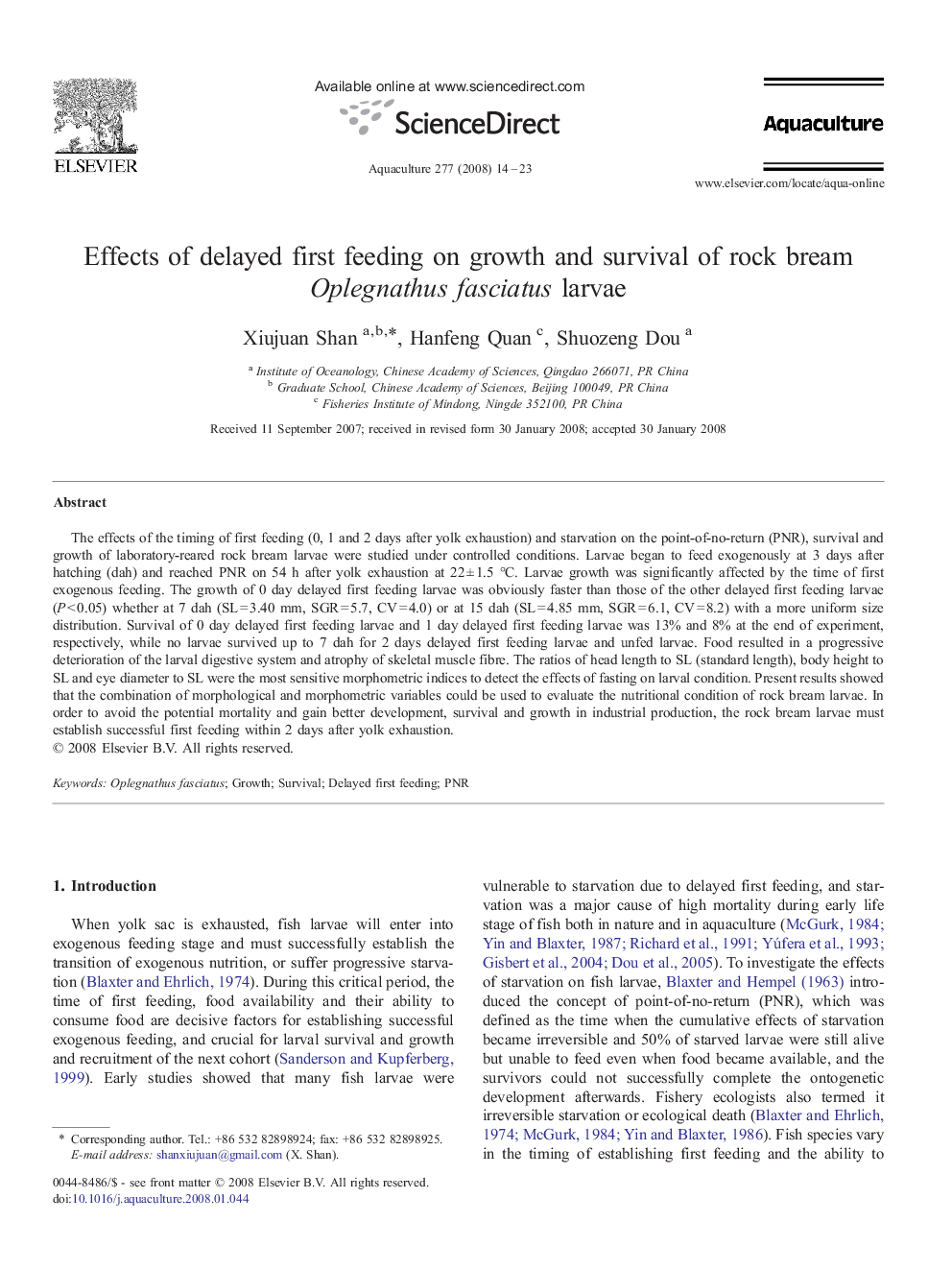| Article ID | Journal | Published Year | Pages | File Type |
|---|---|---|---|---|
| 2424615 | Aquaculture | 2008 | 10 Pages |
The effects of the timing of first feeding (0, 1 and 2 days after yolk exhaustion) and starvation on the point-of-no-return (PNR), survival and growth of laboratory-reared rock bream larvae were studied under controlled conditions. Larvae began to feed exogenously at 3 days after hatching (dah) and reached PNR on 54 h after yolk exhaustion at 22 ± 1.5 °C. Larvae growth was significantly affected by the time of first exogenous feeding. The growth of 0 day delayed first feeding larvae was obviously faster than those of the other delayed first feeding larvae (P < 0.05) whether at 7 dah (SL = 3.40 mm, SGR = 5.7, CV = 4.0) or at 15 dah (SL = 4.85 mm, SGR = 6.1, CV = 8.2) with a more uniform size distribution. Survival of 0 day delayed first feeding larvae and 1 day delayed first feeding larvae was 13% and 8% at the end of experiment, respectively, while no larvae survived up to 7 dah for 2 days delayed first feeding larvae and unfed larvae. Food resulted in a progressive deterioration of the larval digestive system and atrophy of skeletal muscle fibre. The ratios of head length to SL (standard length), body height to SL and eye diameter to SL were the most sensitive morphometric indices to detect the effects of fasting on larval condition. Present results showed that the combination of morphological and morphometric variables could be used to evaluate the nutritional condition of rock bream larvae. In order to avoid the potential mortality and gain better development, survival and growth in industrial production, the rock bream larvae must establish successful first feeding within 2 days after yolk exhaustion.
